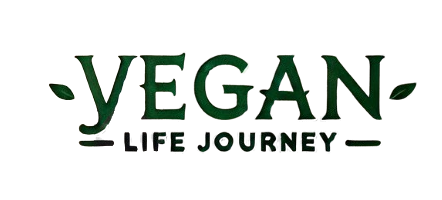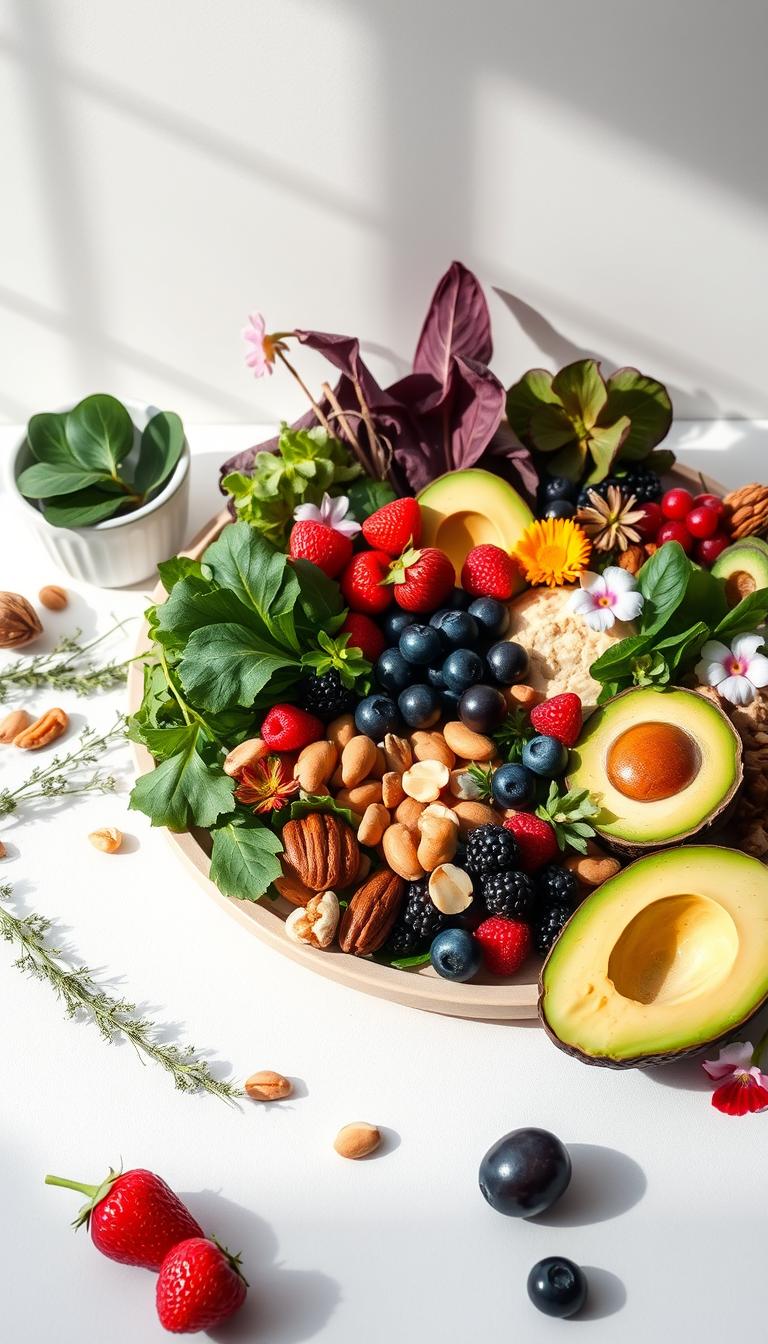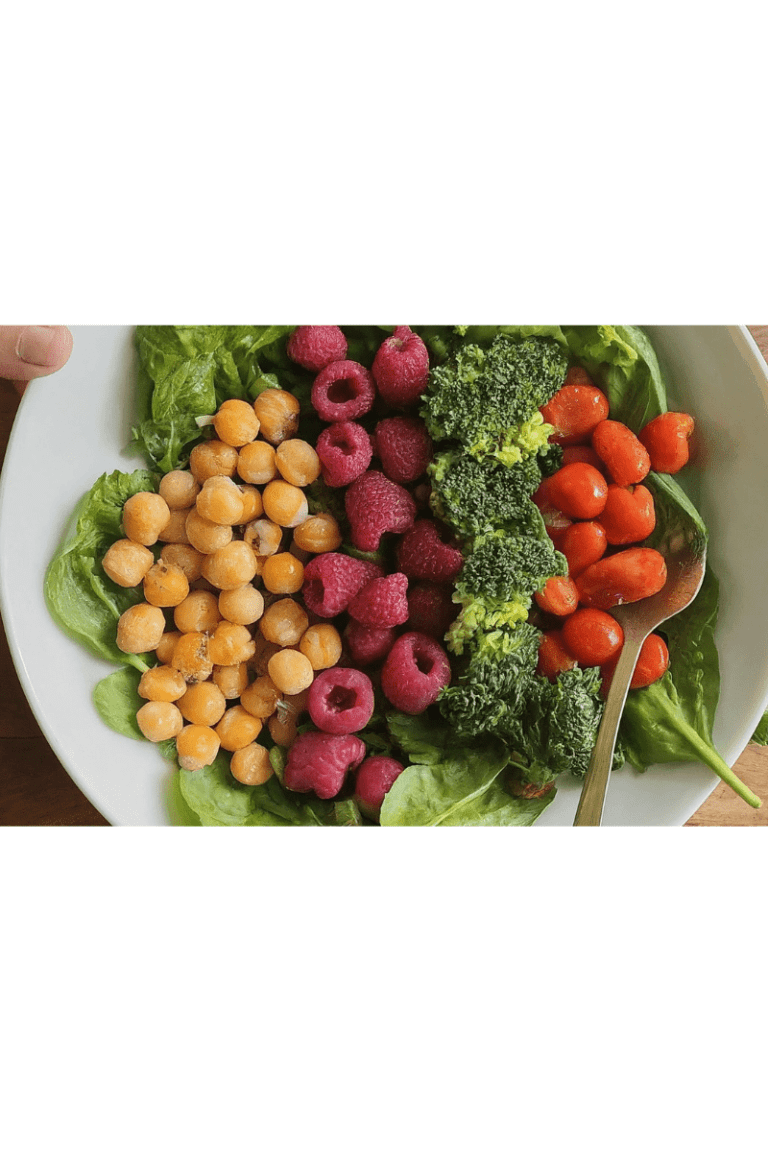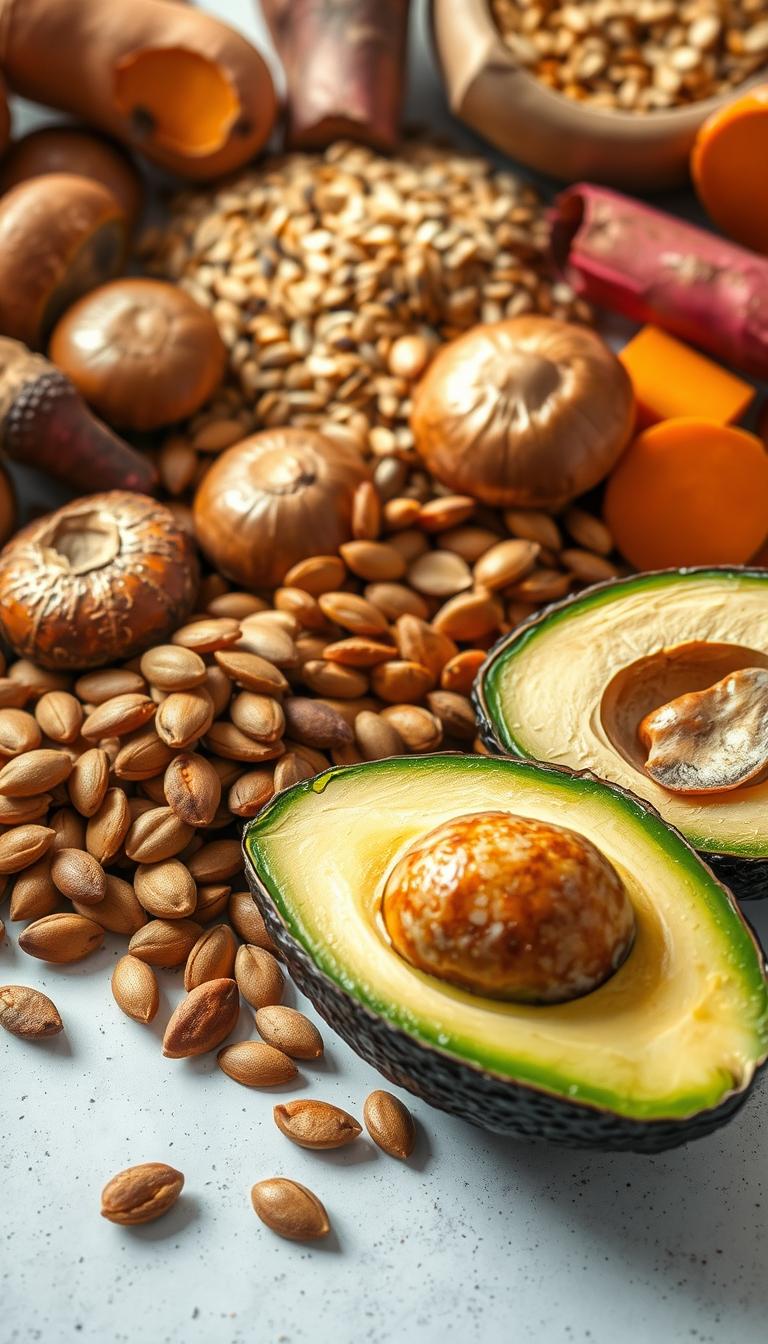
Top High Sources of Copper in Vegan Foods
Did you know a single 3.5-ounce bar of dark chocolate gives you 200% of your daily copper? This shows how foods like dark chocolate, shiitake mushrooms, and nuts are full of copper. Vegans often get more copper than meat-eaters because of their diet.
Leafy greens and legumes are great sources of copper. Copper is important for energy, immunity, and strong blood vessels. It’s key for staying healthy on a plant-based diet.
Spirulina gives you 44% of your daily copper in just one tablespoon. A baked potato has 204 micrograms of copper. Vegan foods like tofu and sunflower seeds are also good sources.
These foods naturally provide copper. A well-planned vegan diet can meet and even exceed your copper needs. You can get this important nutrient from everyday ingredients.
Why Copper is an Essential Nutrient for Your Health
Copper is more than just a kitchen sink fixture. It’s an essential mineral your body needs every day. This vital nutrient plays key roles in your energy production, immune system, and tissue health. Let’s explore how it keeps you healthy.
The Role of Copper in Energy Production
Your cells need copper to make energy. It helps turn food into ATP, the fuel for your body’s functions. Without enough copper, you might feel tired. Think of it as a spark plug for your body’s engine.
How Copper Supports Your Immune System
When your immune system battles germs, copper helps. It aids in making white blood cells and acts as an antioxidant. This neutralizes free radicals that harm cells. It keeps your overall health by reducing inflammation and supporting healing.
Copper’s Impact on Blood Vessel Health and Connective Tissues
Ever wondered why your skin stays elastic or joints bend smoothly? Copper builds collagen and elastin, proteins in connective tissues and blood vessels. It also helps in formation of red blood cells, ensuring oxygen flows through your body tissues. Without enough copper, these systems weaken over time.
| Food | Serving | Copper Content (mcg) |
|---|---|---|
| Cashew nuts (dry roasted) | 1 oz | 629 (70% DV) |
| Shiitake mushrooms (cooked) | ½ cup | 650 (72% DV) |
| Tofu | ½ cup | 476 (53% DV) |
These foods help you meet your daily copper needs. Even plant-based diets provide enough when you eat these vitamin-rich options regularly. Your body can’t make copper, so including these in meals keeps your production of red blood cells and tissues strong.
Understanding Your Daily Copper Requirements
Your daily copper requirements change with age. Adults 19+ need 1.2 mg of copper every day. Teens 11-18 get 0.8–1.0 mg. Kids under 10 need even less, like 0.2 mg for babies and 0.3 mg for toddlers.
Pregnant women need the same amount as adults. But, breastfeeding moms should add 0.3 mg daily. These copper requirements help keep your body healthy and strong.
- Infants (0–3 months): 0.2 mg
- Children 1–3 years: 0.4 mg
- Teens 11–14: 0.8 mg
- Adults 19+: 1.2 mg
- Breastfeeding: 1.5 mg total
Most plant-based diets meet these daily requirements easily. Foods like nuts, beans, and leafy greens are full of copper. For example, ¼ cup of cashews has about ~0.6 mg.
Even small amounts from different meals add up. But, some adults, like women, might not get enough. Try to get enough copper from whole foods. Don’t use supplements unless a registered dietitian tells you to.
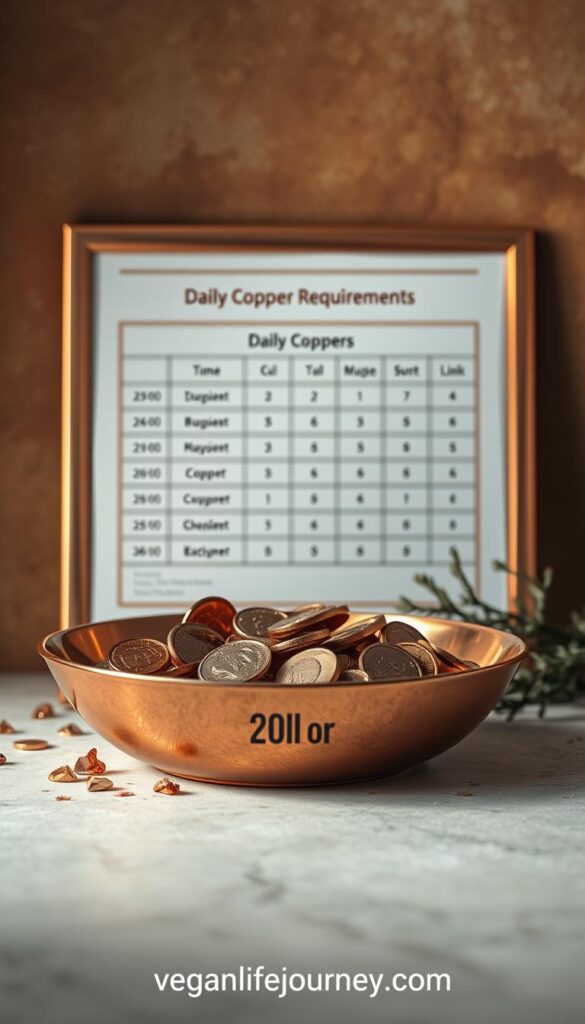
If you have digestive problems or worries about copper intake, talk to a healthcare provider. Eating a balanced diet with nuts, seeds, and whole grains helps meet your daily values. Eating small but regular amounts of copper-rich foods keeps your body healthy without making meals too complicated.
Best Foods with Copper for Vegan and Plant-Based Diets
Creating a copper-rich diet is simple. These plant-based foods are packed with copper and add variety to your meals. Here are the top picks to help you meet your daily copper needs:

Legumes and Beans: Garbanzo Beans and More
Legumes are key for copper in a vegan diet. Garbanzo beans (chickpeas) have 0.29 mg per cooked cup, great for hummus or curries. Adzuki beans offer 0.36 mg per 70g serving, perfect for soups or salads.
Add kidney beans (0.40 mg per 120g cooked) to chili or tacos. Even baked beans contribute, with each half-cup serving giving 8% of your daily copper.
Nuts and Seeds: Sunflower Seeds, Sesame Seeds, and Brazil Nuts
A handful of sunflower seeds gives you 519 mcg of copper per ounce. Sesame seeds are a powerhouse with 44% of the RDI in just a heaped teaspoon. Brazil nuts add 0.35 mg per six kernels.
Mix them into trail mix or sprinkle on oatmeal for a nutrient boost.
Whole Grains: Brown Basmati Rice and Wholewheat Spaghetti
Whole grains like brown basmati rice (0.25 mg per medium portion) and wholewheat spaghetti (0.57 mg per average portion) offer copper and fiber. Swap refined grains for these options to double your copper intake without extra prep.
Dark Chocolate and Other Surprising Sources
Dark chocolate (70–85% cocoa) surprises with 470 mcg per 25g square. Snack on it or melt it into smoothies. Even mushrooms and potatoes contribute, with shiitake mushrooms giving 650 mcg per half-cup cooked serving.
Leafy Greens and Vegetables as Copper Sources
Leafy greens are a good source of copper and packed with important nutrients. For example, spinach gives you 34% of your daily copper in just one cooked cup. These greens also come with vitamin K, iron, and antioxidants, making them a great addition to any meal.
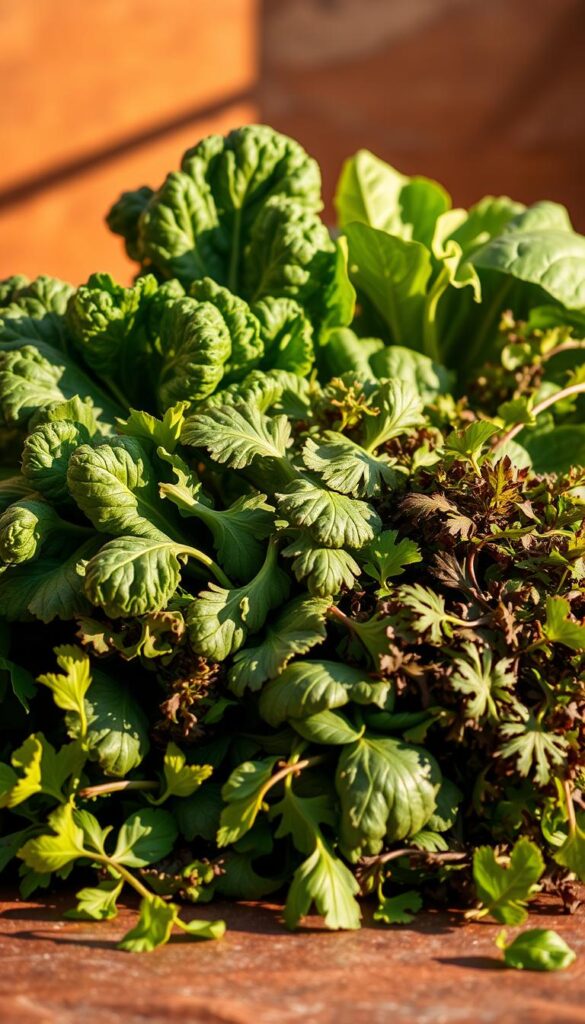
| Vegetable | Copper per Serving | % Daily Value | Key Nutrients |
|---|---|---|---|
| Cooked Turnip Greens | 0.4mg/cup | 40% | Fiber, vitamin A |
| Cooked Beet Greens | 0.3mg/cup | 34% | Potassium, folate |
| Cooked Spinach | 0.3mg/cup | 34% | Iron, magnesium |
| Raw Artichoke | 0.3mg/medium | 33% | Fiber, vitamin C |
Cooking makes copper in like spinach more available. Try sautéed Swiss chard or roasted beet greens for a copper boost. Adding like citrus fruits helps with absorption. While are quick, whole offer more fiber and nutrients.
- Add spinach to omelets or smoothies
- Steam kale as a side dish
- Top salads with shredded artichoke hearts
Swiss chard and turnip greens have over 30% copper per cup cooked. Their copper content is as good as nuts and seeds. Mixing greens adds variety and balance. Your body absorbs copper better with vitamin C from citrus or bell peppers. Choose whole over processed for the best benefits.
Mushrooms: The Copper-Rich Fungi for Your Vegan Diet
Mushrooms are a great choice for a vegan diet because they are copper-rich foods. They get minerals like copper from the soil. Shiitake mushrooms have the most copper among common types. They are also versatile and full of nutrients, making them essential for plant-based meals.
Shiitake Mushrooms: A Vegan Copper Powerhouse
Raw shiitake mushrooms have 20% of your daily copper. But cooking them makes them even more copper-rich. One cooked cup has 1300 micrograms, which is 144% of your daily value. Even dried shiitake (just 15g) gives 89% of your copper needs.
They are also full of B vitamins, selenium, and vitamin D. These are nutrients often missing in vegan diets. Add them to soups or stir-fries to increase your copper content.
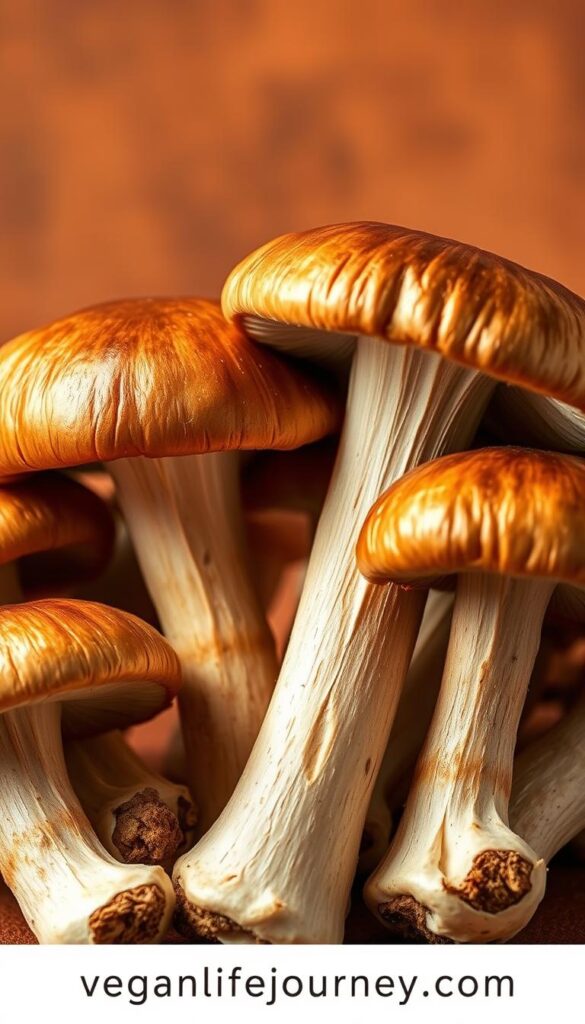
How to Prepare Mushrooms to Preserve Copper Content
Cooking mushrooms makes their copper easier to use. Sauté or roast them briefly. Avoid boiling, as it can lose nutrients. Here are some ideas:
- Stir-fry with veggies for a quick side dish.
- Rehydrate dried shiitake for soups or salads.
- Marinate sliced mushrooms in tamari for a crispy “bacon” alternative.
Pair them with vitamin C-rich foods (like bell peppers) to help your body absorb more copper. Even a small amount, like 4 dried shiitake, adds 89% of your copper needs. This makes them a smart choice for your meals.
Signs of Copper Deficiency to Watch For
Feeling tired or getting sick a lot? These could be signs of copper deficiency. Your body needs enough copper to absorb iron and keep your immune system strong. It also helps prevent anemia.
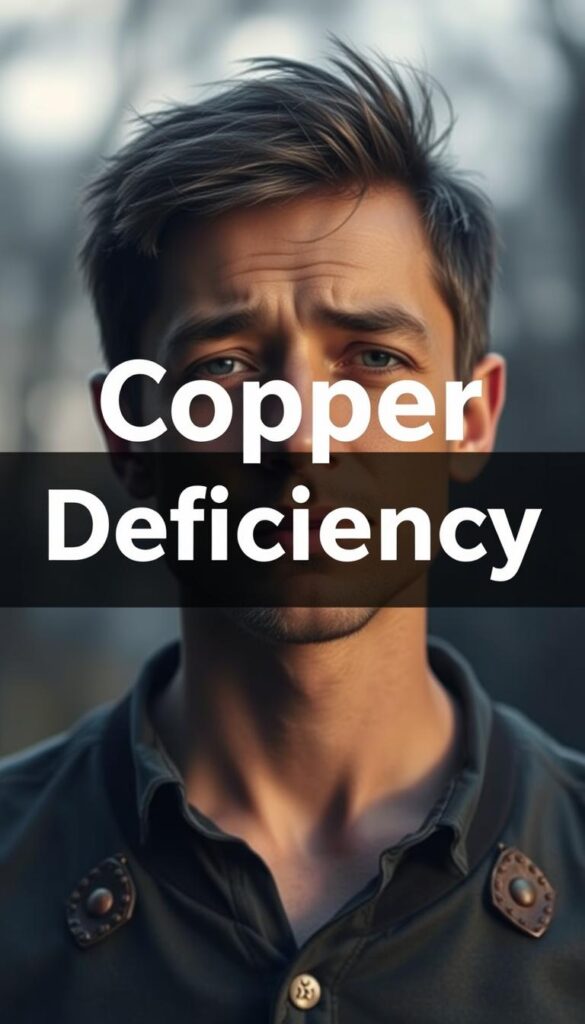
- Fatigue or unexplained weakness
- Bone fragility or frequent fractures
- Anemia (pale skin, dizziness)
- Slow wound healing
- Unusually high zinc absorption from supplements interfering with copper
Not just diet affects copper levels. People with celiac disease or taking lots of zinc supplements might struggle. Severe cases, like Menkes disease or Wilson disease, need doctor’s help.
| Condition | Impact | Risk Group |
|---|---|---|
| Menkes disease | Severe copper malabsorption | Newborns with genetic mutations |
| Wilson disease | Copper buildup in organs | Genetic predisposition |
| Celiac disease | Malabsorption due to gluten damage | Those with intestinal disorders |
If you’re on a low-copper diet or have symptoms like anemia or vitamin B fatigue, see a doctor. Even small copper shortages can lower energy and affect mood. Copper works with vitamin B12 for healthy blood.
Balancing Copper with Other Nutrients in Your Vegan Meals
When planning vegan meals, it’s important to balance copper with zinc, vitamin C, and other nutrients. Eating too much copper without enough zinc-rich foods like pumpkin seeds or lentils can upset your body’s balance. Try to keep a 10:1 zinc-to copper ratio to avoid deficiencies.
Copper and Zinc: A Delicate Dance
Zinc from plant sources like chickpeas and fortified cereals is good for immunity. But, too much zinc absorption from supplements can stop copper from being absorbed. Always check food labels to avoid high doses of zinc supplements, which can cause nausea or anemia. Use whole foods and the USDA National Nutrient Database for accurate values.
Vitamin C: The Copper Booster
- Citrus fruits like oranges boost copper absorption when paired with copper-rich foods (e.g., kale + orange slices).
- Add bell peppers or strawberries to meals to enhance how your body uses copper.
Watch for Nutrient Blockers
Some foods like spinach and soy have phytates that lower iron absorption and copper uptake. Pairing these with vitamin c-rich foods like tomatoes can help. Make sure to include enough protein from tofu or quinoa to support mineral balance.
Regularly check your meals with the USDA database. Small changes, like soaking grains or enjoying citrus with beans, help keep copper balanced. Always choose whole foods over pills to avoid overconsumption.
Potential Risks of Excess Copper Intake
While copper is vital, excess copper or high levels of copper can cause copper toxicity. Most people don’t face this problem because their bodies naturally balance copper. But, some situations require extra care. For example, copper supplements in large amounts might lead to nausea, vomiting, or liver damage.
Signs of too much copper include stomach pain, diarrhea, and feeling tired. Long-term copper toxicity can harm the liver and brain. People with Wilson’s disease, a genetic disorder, have trouble getting rid of copper, which can damage the liver. Vegans might also get too much copper from nuts, seeds, or copper pans (which release copper when cooking acidic foods).
Zinc is important for balancing copper. Taking too much zinc can affect how much copper you absorb. Always talk to a doctor before taking copper supplements and zinc together. Use stainless steel cookware when cooking tomatoes or citrus to avoid getting too much copper from copper pans.
| Symptom | Common Cause |
|---|---|
| Abdominal pain | Acute exposure from supplements |
| Chronic fatigue | Long-term high copper diets without zinc |
| Neurological issues | Wilson’s disease or liver dysfunction |
To stay balanced, eat foods high in copper with zinc sources like pumpkin seeds. The UK suggests not taking more than 1mg of copper supplements a day unless a doctor says it’s okay. Pay attention to how your body feels and see a healthcare provider if you notice any problems.
Conclusion: Creating a Balanced Vegan Diet Rich in Copper
Creating a balanced diet with copper-rich foods is simpler than you might think. Copper is an essential nutrient found in whole plant foods. Foods like spinach, cashews, and mushrooms, such as shiitake, are great sources.
Even small amounts, like 15 grams of dried shiitake, provide almost 90% of your daily copper needs. Cashews give you over two-thirds of your daily copper.
A 2016 EPIC study found that vegans get more copper than non-vegans. But, overall health depends on choosing the right foods. Pair copper-rich foods like almonds with vitamin C in bell peppers to improve absorption.
Be careful not to take too much zinc, as it can block copper absorption.
Try to eat a variety of foods. Swap quinoa for Arborio rice in risotto, add spirulina to smoothies (44% RDI per 7g), or enjoy dark chocolate (70% cocoa) sometimes. These choices help you get enough copper without needing supplements.
Unless you have a health reason, don’t rely on supplements. A plant-based diet already has plenty of copper from nuts, seeds, and leafy greens. By focusing on these foods and pairing them wisely, you keep your copper levels right. This way, you support your energy, immunity, and connective tissues. With so many tasty options, it’s easy to keep your body nourished with copper.
